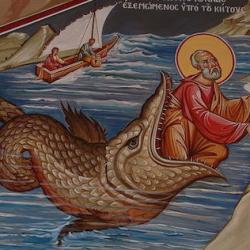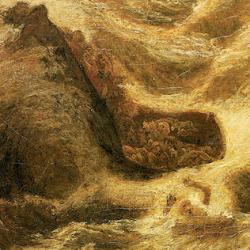I have long thought of the two parallel sections of Jonah as basically retellings of the same story, but now I’m thinking that they are consecutive thematically as well as chronologically. Here’s the typology: Jonah/Israel is called to witness to the nations, and refuses. Yahweh forces him into exile in the sea of nations, where he swallowed a great imperial sea monster. Then he’s vomited back into the land, bringing an end to exile. At that point, he’s supposed to have learned his lesson and go to the Gentiles to preach judgment and salvation, which he reluctantly does, just as Israel did in fact witness to the Gentiles after the exile. But he’s angry about the salvation of the city, just as Jews by Jesus’ day had become resistant to their ministry to the Gentiles and just as Jews in the first century were jealous of God’s mercy to Gentiles. The “provocation to jealousy” theme that drives the beginning of Jonah is thus still going on at the end; Jonah is typical of the Jews who are angered by the conversion of Gentiles. This is the sign of Jonah: that a dead-and-risen prophet brings salvation to Gentiles but leaves Jews angry and sullen.
Jonah’s little hut fits here too. The Hebrew word is SUKKAH, booth or tent, and is used of sanctuaries in a number of places in the Bible (the “booth of David,” for instance). Jonah is brought from exile, and builds his little temple, and waits for the Lord to burn the Gentiles cities.















